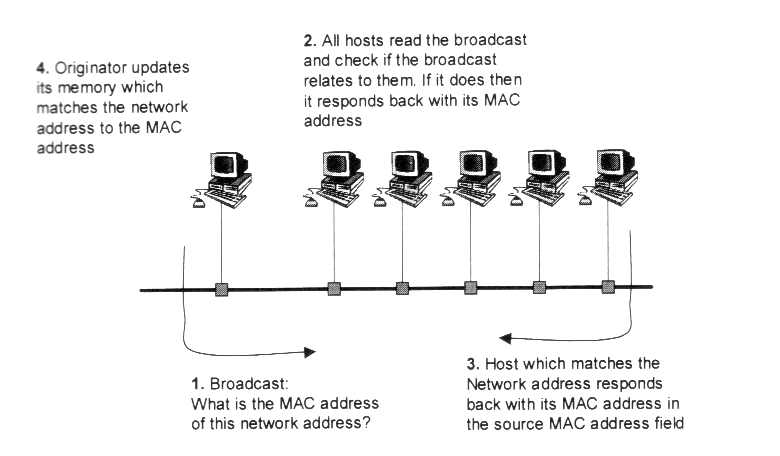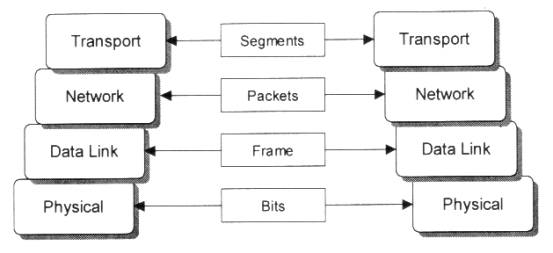Theoretical Paper
- Computer Organization
- Data Structure
- Digital Electronics
- Object Oriented Programming
- Discrete Mathematics
- Graph Theory
- Operating Systems
- Software Engineering
- Computer Graphics
- Database Management System
- Operation Research
- Computer Networking
- Image Processing
- Internet Technologies
- Micro Processor
- E-Commerce & ERP
Practical Paper
Industrial Training
Advantages of Networking
A network consists of two or
more computers that are linked in order to share resources (such as printers and
CD-ROMs), exchange files, or allow electronic communications. The computers on a
network may be linked through cables, telephone lines, radio waves, satellites,
or infrared light beams.
TYPES OF NETWORKS
The three basic types of
networks include: LAN, MAN and WAN
Local Area Network
A network is said to be Local
Area Network (LAN) if it is confined relatively to a small area. It is generally
limited to a building or a geographical area, expanding not more than a mile
apart to other computers.
Speed. Sharing and transferring files within Networks are very rapid. Thus saving time, while maintaining the integrity of the file.
Cost. Individually licensed copies of many popular software programs can be costly. Networkable versions are available at considerable savings. Shared programs, on a network allows for easier upgrading of the program on one single file server, instead of upgrading individual workstations.
Security. Sensitive files and programs on a network are passwords protected (established for specific directories to restrict access to authorized users) or designated as "copy inhibit," so that you do not have to worry about illegal copying of programs.
Centralized Software Management.Software can be loaded on one computer (the file server) eliminating that need to spend time and energy installing updates and tracking files on independent computers throughout the building.
Resource Sharing. Resources such as, printers, fax machines and modems can be shared.
Electronic Mail. E-mail aids in personal and professional communication. Electronic mail on a LAN can enable staff to communicate within the building having tot to leave their desk.
Flexible Access. Access their files from computers throughout the firm.
Workgroup Computing. Workgroup software (such as Microsoft BackOffice) allows many users to work on a document or project concurrently.
Disadvantages of Network
-
Server faults stop applications being available
-
Network faults can cause loss of data.
-
Network fault could lead to loss of resources
-
User work dependent upon network
-
System open to hackers
-
Decisions tend to become centralised
-
Could become inefFicient
-
Could degrade in performance
-
Resources could be located too far from users
-
Network management can become dif
OSI MODELS>
The standard model for networking protocols and distributed applications is the International Standard Organization's Open System Interconnect (ISO/>OSI>) model. It defines seven network layers.
- Layer 1 - Physical
-
This layer defines the cable or physical medium itself, e.g. unshielded twisted pairs (UTP). All media of transmission are functionally equivalent in this layer and the main difference is in convenience and cost of installation and maintenance.
- Layer 2 - Data Link
-
Data Link layer defines the format of data on the network ( a network data frame, packet and destination address). The Maximum Transmission Unit (MTU) is defined by the largest packet that can be sent through a data link layer.
- Layer 3 - Network
-
This layer defines the protocols that are responsible for data delivery at the required destination, and requires.
- Layer 4 - Transport
-
This layer subdivides user-buffer into network-buffer sized datagrams and enforces desired transmission control. Two transport protocols, Transmission Control Protocol (TCP) and User Datagram Protocol (UDP), sits at the transport layer. Reliability and speed are the primary difference between these two protocols.
- Layer 5 - Session
-
This leyer defines the format of the data sent over the connections.
- Layer 6 - Presentation
-
This layer converts local representation of data to its canonical form and vice versa. The canonical uses a standard byte ordering and structure packing convention, independent of the host.
- Layer 7 - Application
-
Provides network services to the end-users. e.g Mail.
OSI Model gives; Increased evolution, Modular
engineering, Interoperable technology, Reduced complexity
Simplified teaching and learning, Standardised interfaces.
INTERNETWORKING
nternetwork is a collection of individual networks, connected by intermediate networking devices, that functions as a single large network.
Different Network Technologies Can Be Connected to Create an Internetwork
Internetworking devices have many advantages and they are:
Increases the number of nodes that can connect to the network thus limitations on the number of nodes that connect to a network relate to the cable lengths and traffic constraints.
- Extends the physical distance of the network.
They localize traffic within a network.
Merge existing networks.
Isolate network faults.
Typical internetworking devices are:
- Repeater. Operate at Layer 1 of the OSI
Bridges. Passes data frames between net‑works using the MAC address (Layer address).
Hubs.Allow the interconnection of nodes and create a physically attached network.
Switches. Allow simultaneous communication between two or more nodes, at a time.
- Routers. Passes data packets between connected networks, and operate on network addresses (Layer 3 address).
BROADCASTS
Todetermine the network address of a computer, the host send out broadcast to
all the host on its network segment. There are two types:
-
Requests for a destination MAC addresses. A broadcast is sent to all the hosts on the network segment. A host with matching network address responds back with its MAC address in the source MAC address field. The MAC and the network address is stored in the memory of the host so that they can be used in the future communication. Known as Address Resolutions Protocol (ARP).
-
Requests for a network address. A host sends out a request with the MAC address if it does not know network address for a given MAC address. A server on the network responds back with the network address for the given MAC address. Known as Reverse Address Resolution Protocol (RARP).
Most networking technologies have a special MAC address for a broadcast. Ethernet uses the address: FF-FF-FF-FF-FF-FF for a broadcast. There are also network broadcast addresses using the network address (known as multicast) - all nodes on the network listen to the communication (such as transmitting a video conference to many nodes on a network, at the same time), but they are used for different purposes than with broadcast MAC addresses, which are used to get network information.

Broadcast for MAC Address
BITS, FRAMES, PACKETS AND SEGMENTS
At each nodes each of the OSI layers communicates directly with the equivalent layer on the receiving host. The data that is transmitted in each of the lower layers is referred to in a different way. Protocol data units (PDUs) are the data that passes from layer to layer and are referred to in different ways in each of the layers (bits - at the physical, frames - at the data link layer,packets - at the network layer they, and segments - at the transport layer).
Bits, frames, packets and segments

IEEE 802.3 frame format
Preamble 7 bytes
Start delimiter 1 byte DSAP 1
Destination address 6 SSAP 1
Source address 6 Control field 1/2
Length 2 Data
Data field L2L46-1500
FCS 4
IEEE 802.5 frame format
Startclelimiter 1 byte
Access control 1 byte
Frame control 1
Destination address 6
Source address 6
Data
FCS 4
End delimiter 1
Frame status 1
Token Start delimiter
1 Access control Priority 3 bits Token 1 bit Monitor 1 Reservation 3 bits End delimiter 1
![]()
A protocol is a set of rules that governs the communications between computers on a network. These rules are guidelines that regulate the access method, allowed physical topologies, types of cabling, and speed of data transfer.
The most common protocols are:
- Ethernet
- LocalTalk
- Token Ring
- FDDI
- ATM
Ethernet
This is the most widely used protocol. This protocol uses an access method called CSMA/CD (Carrier Sense Multiple Access/Collision Detection). In this system each computer listens to the cable for any transmitting node before sending anything through the network. If the network is clear, the computer will transmit. Else wait and try again when the line is clear. Sometimes, two computers attempt to transmit at the same instant (causing a collision). Each computer then backs off and waits a random amount of time before attempting to retransmit. The delay by collisions and retransmitting is very small and does not normally affect the speed of transmission on the network.
Topologies are bus star or tree and transmission is via twisted pair, coaxial, or fibre optic cable at a speed of 10 Mbps.
Fast Ethernet
Support 100Mbps and are more expensive network concentrators/hubs and network interface cards is requires for Fast Ethernet. Category 5 twisted pair or fibre optic cable is necessary.
Gigabit Ethernet
The Ethernet has a standard protocol of 1Gbps transmission speed but used primarily for backbones on a network.
LocalTalk
Apple Computer developed LocalTalk for Macintosh computers. The method used by LocalTalk is called CSMA/CA (Carrier Sense Multiple Access with Collision Avoidance). It is similar to CSMA/CD except that a computer signals its intent to transmit before it actually does so. LocalTalk adapters and special twisted pair cable can be used to connect a series of computers through the serial port.
LocalTalk protocol allows for linear bus, star, or tree topologies using twisted pair cable.
Token Ring
This was developed by IBM in the mid 1980s. The method used involves token-passing. Computers are connected so that the signal travels around the network from one computer to another in a logical ring. A single electronic token moves around the ring from one computer to the next. If a computer does not have information to transmit, it simply passes the token on to the next workstation. If a computer wishes to transmit and receives an empty token, it attaches data to the token. The token then proceeds around the ring until it comes to the computer for which the data is meant. At this point, the receiving computer captures the data.
FIBRE DISTRIBUTED DATA INTERFACE (FDDI)
Access method of token-passing via a dual ring physical topology. Transmission on one of the rings; however, if a break occurs, the system keeps information moving by automatically using portions of the second ring to create a new complete ring. Transmison speed is100 Mbps over a fibre optic cable, but expensive.
ASYNCHRONOUS TRANSFER MODE (ATM)
Transmits data in small packets of a fixed size at a speed of 155 Mbps and higher. ATM supports a variety of media such as video, CD-quality audio, and imaging. ATM employs a star topology with fibre optic or twisted pair cabling.
WIRELESS LANS

Fig 8 Wireless LAN
Wireless LANs use high frequency radio signals, infrared light beams, or lasers to communicate between the workstations and the file server or hubs. Each workstation and file server on a wireless network has some sort of transceiver/antenna to send and receive the data. Information is relayed between transceivers as if they were physically connected. For longer distance, wireless communications can also take place through cellular telephone technology, microwave transmission, or by satellite.
Wireless networks are great for allowing laptop computers or remote computers to connect to the LAN. Wireless networks are also beneficial in older buildings where it may be difficult or impossible to install cables.
This includes all computers,
peripherals, interface cards and other equipment needed to perform data
processing and communications within the network.

